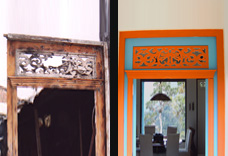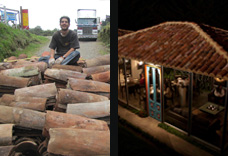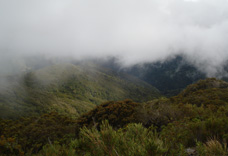The history of Dantica Cloud Forest Lodge starts with its name. The founders and owners of Dantica ecolodge are a Colombian – Dutch couple, Maria Luisa Castro Fernández who is a textile designer, and Joost Wilms who is a tropical ecologist. When Joost was finishing his studies in 1992 he had to do fieldwork in Costa Rica and resulted to study reforestation with frugivorous birds in the Cloud Forest of San Gerardo de Dota. He fell in love with the place, not knowing he would be coming back 10 years later to built an ecolodge with his new love, Maria Luisa.








